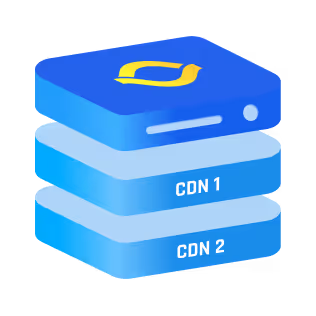What are Common Issues Associated with BGP?
Table of contents
The most common issues with BGP (Border Gateway Protocol) include misconfigurations, route flapping, poor route filtering, convergence delays, and vulnerabilities to hijacking or leaks.
Troubleshooting often involves checking neighbor relationships, route attributes, and using specific BGP commands to diagnose the problem.
Here is what it breaks down to:
1. BGP Misconfigurations
This is probably the number-one culprit. A small typo or misconfiguration in your BGP setup can have cascading effects. The most common misconfigurations include:
- Incorrect Neighbor Statements:
BGP peers exchange routing information over TCP (port 179). If the peer IP, AS number, or authentication keys don’t match between neighbors, the BGP session won’t establish. - Wrong Route Advertisements:
You might accidentally advertise routes you didn’t intend to, such as internal routes meant to stay within your network. - AS Path Loops:
Misconfigured AS path filters can lead to routing loops, where packets endlessly circulate between networks.
Troubleshooting Misconfigurations
- Check Neighbor Status: Use the show ip bgp summary or show bgp neighbor command to ensure the session is established.
- Verify Configurations: Compare configurations on both peers to ensure AS numbers, IPs, and authentication match.
- BGP Commands:
- show ip bgp neighbors – Displays neighbor details, including capabilities and state.
- show ip bgp – Lists current BGP routes and attributes.
2. Route Filtering Problems
BGP is highly dependent on accurate route filtering. Poorly configured filters can lead to issues like route leaks or accepting unwanted routes.
- Route Leaks:
This happens when a network advertises routes to a peer that shouldn’t receive them. For instance, private routes being advertised to public peers. - Accepting Bogus Routes:
If you don’t properly filter incoming routes, you might end up accepting malicious or incorrect ones, which can disrupt your network.
Troubleshooting Route Filtering
- Review Filters:
Check your route maps, prefix lists, and AS-path filters for mistakes. For example:- Prefix lists define which routes are allowed or denied.
- AS-path filters manage which AS paths are valid.
- BGP Attributes Cheat Sheet:
Keep a handy reference for attributes like Local Preference, AS Path, and MED (Multi-Exit Discriminator) to understand how your filters interact.
3. Route Flapping
When routes keep going up and down, it’s called route flapping. This can overload BGP processing and lead to instability.
- Causes of Route Flapping:
- Unstable links or hardware failures.
- Misconfigured timers causing frequent BGP session resets.
- External issues, such as a noisy link between ISPs.
- Impact of Flapping:
BGP routers send frequent updates to account for the changes, which can strain CPU resources and slow convergence.
Troubleshooting Route Flapping
- Identify Unstable Routes:
Use show ip bgp flap-statistics to pinpoint flapping prefixes. - Implement Dampening:
BGP route dampening suppresses unstable routes to prevent excessive updates. For example:
Troubleshooting Route Flapping
- Identify Unstable Routes:
Use the show ip bgp flap-statistics command to pinpoint flapping prefixes. - Implement Dampening:
BGP route dampening suppresses unstable routes to prevent excessive updates. For example:
route-map DAMPENING permit 10
set dampening 15 750 2000 60
This penalizes routes for instability and gradually reintroduces them once they stabilize.
4. Convergence Delays
BGP convergence is the process of all routers agreeing on the best paths after a change. It’s inherently slow compared to interior protocols like OSPF or EIGRP, but delays can become problematic.
- Why Convergence Is Slow:
BGP has no global view of the network; it relies on incremental updates from neighbors. Each update propagates step by step. - Common Triggers:
- Large-scale changes in network topology.
- High CPU load on routers during reconvergence.
- Excessive prefix advertisements.
Troubleshooting Convergence Issues
- Limit Advertised Prefixes:
Aggregate routes where possible to reduce the number of prefixes BGP needs to process. - Increase Timers for Stability:
Adjust hold and keepalive timers to reduce session resets during transient issues.
5. Vulnerabilities: Hijacking and Leaks
BGP’s lack of built-in security makes it vulnerable to attacks like prefix hijacking and route leaks.
- Prefix Hijacking:
Malicious actors advertise IP prefixes they don’t own, redirecting traffic to themselves. This can cause outages or data theft. - Route Leaks:
A misconfigured or malicious network advertises routes it shouldn’t, causing traffic to be routed inefficiently or insecurely.
Mitigation Techniques
- Implement RPKI (Resource Public Key Infrastructure):
RPKI validates that the AS advertising a prefix is authorized to do so. - Enable BGP Error Tolerance:
Modern routers support error tolerance features to handle malformed or unexpected updates gracefully. - Use BGP Monitoring Tools:
Tools like BGPmon or RIPE RIS can alert you to suspicious changes in advertised routes.
6. TCP Port and Session Issues
BGP operates over TCP port 179, and session failures at the TCP layer can disrupt communication.
- Common Problems:
- Firewall rules blocking port 179.
- Intermediate devices causing packet loss or resets.
- MTU mismatches leading to fragmented packets.
Troubleshooting TCP Issues
- Verify Connectivity:
Use ping and telnet to check if TCP port 179 is open between peers. - Inspect Logs:
Look for session establishment errors or frequent resets in system logs. - Adjust MTU Settings:
Ensure the Maximum Transmission Unit (MTU) is consistent across the link to avoid fragmentation.
7. BGP Scalability Challenges
BGP wasn’t initially designed for the scale of today’s internet. As the global routing table grows, some networks struggle with scalability.
- Challenges Include:
- Limited router memory for storing large routing tables.
- High CPU usage during updates or convergence.
Mitigating Scalability Issues
- Route Aggregation:
Combine smaller prefixes into larger aggregates to reduce table size. - Use Default Routes:
Where possible, rely on default routes instead of advertising every prefix. - Deploy Route Reflectors:
In large networks, route reflectors reduce the number of peer-to-peer connections needed.
Quick Troubleshooting Checklist
Here’s a quick-reference checklist for tackling common BGP issues:


.png)
.png)
.png)